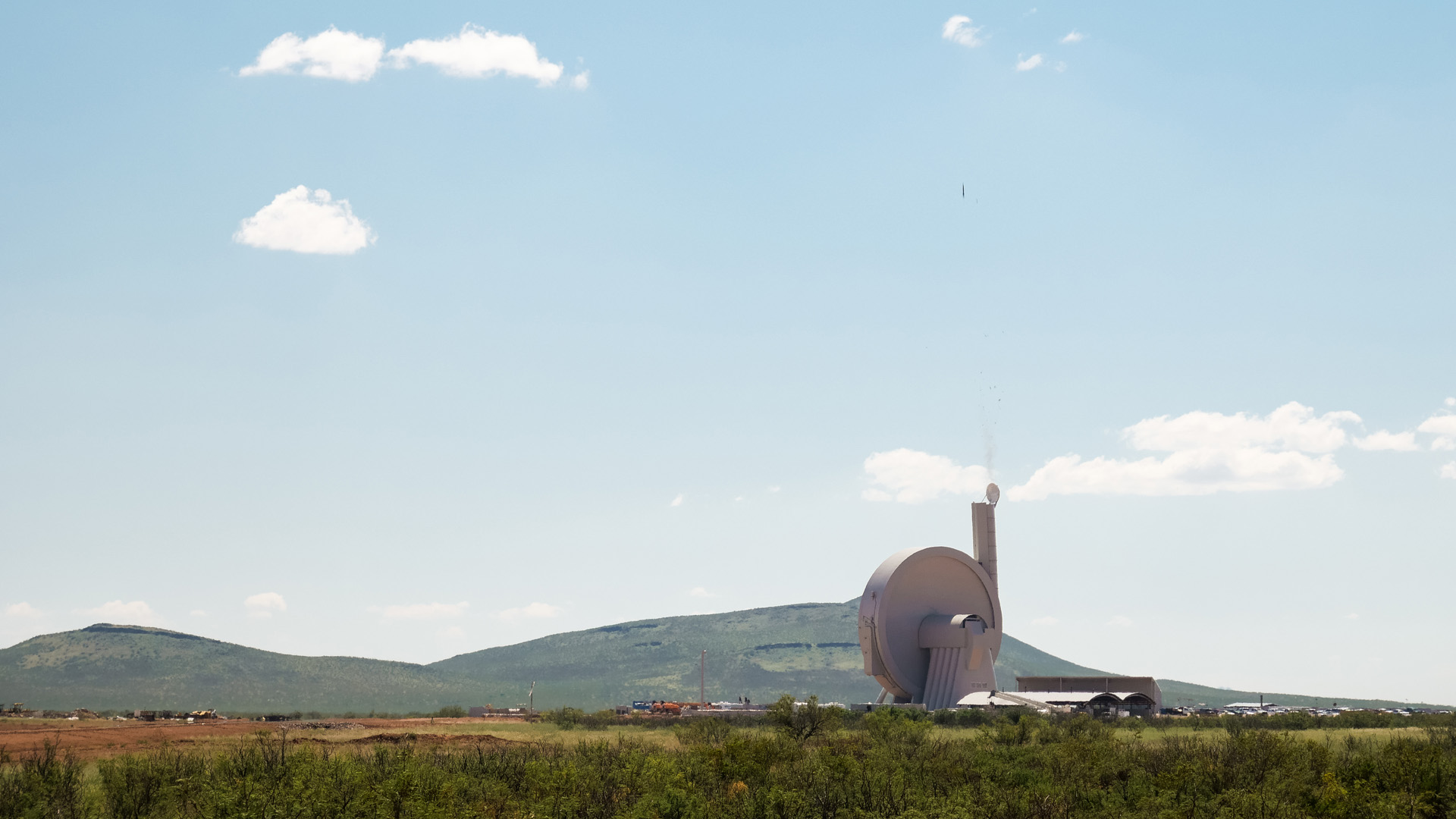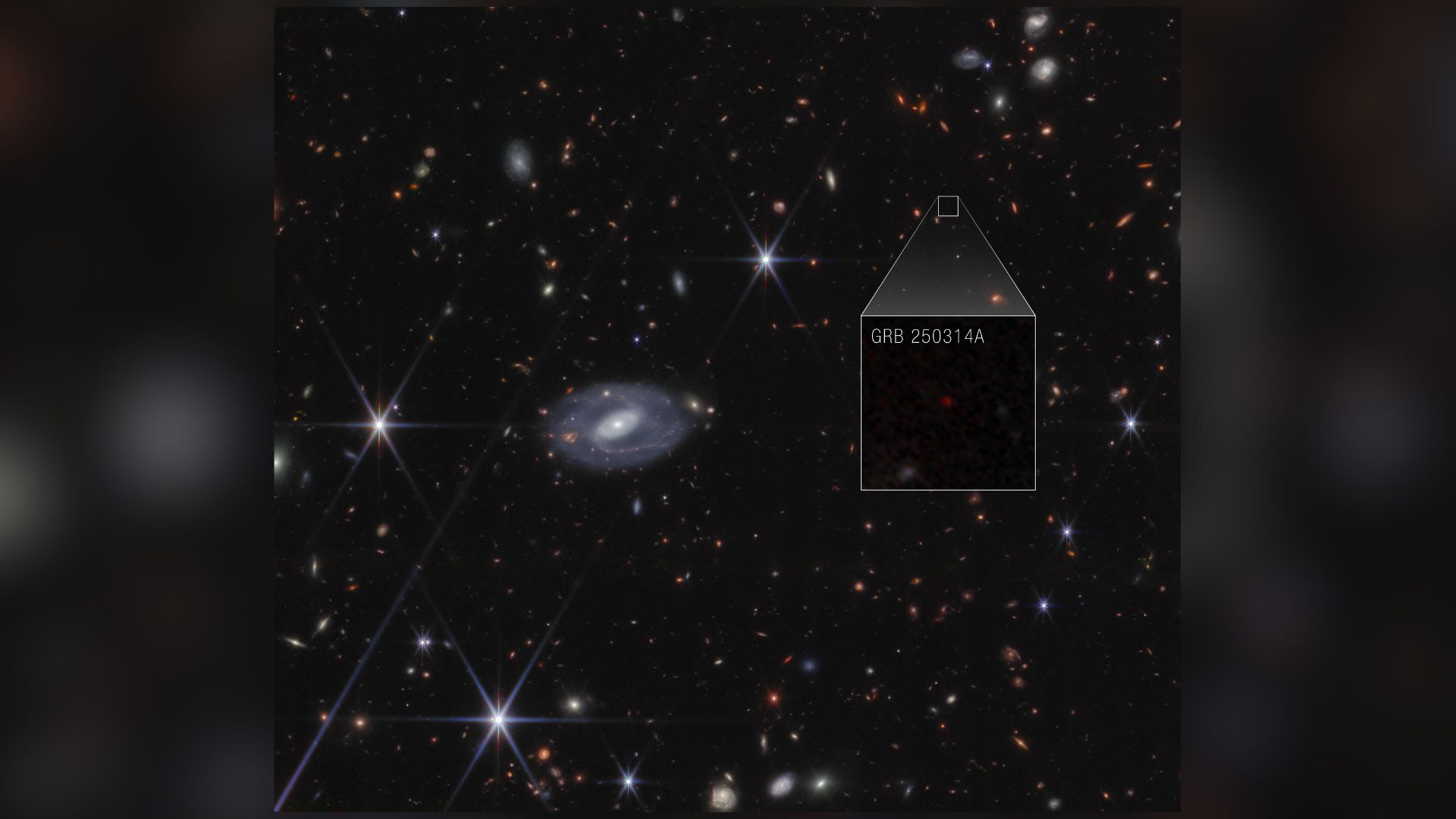Startup SpinLaunch aces 10th suborbital launch with high-tech slingshot
SpinLaunch plans to loft small satellites into low Earth orbit by 2026.

SpinLaunch, a California-based start-up developing a rotating arm that can fling small satellites into near-Earth space has pulled off its 10th successful test launch in less than a year.
SpinLaunch's Suborbital Accelerator system catapulted the company's flight vehicle for a brief suborbital sortie from a base at Spaceport America in New Mexico on Sept. 27. For the first time, the vehicle hosted a range of third-party experiments including from NASA, Airbus and Cornell University.
More than 150 visitors looked on as the accelerator, resembling a giant sky-facing gun, fired its space-bound bullet in the air.
"Today we have accomplished our tenth test flight and it has proven that it's a system that is repeatedly reliable," Jonathan Yaney, Founder and CEO of SpinLaunch said in a video shared by the company on YouTube on Tuesday (Oct.4). "This is not a rocket and clearly our ability to perform in just eleven months this many tests and have them all function as planned, really is a testament to the nature of our technology."
Related: Startup SpinLaunch completes first test flight with wild rocket-flinging launch system
The 10th successful flight was an important milestone for SpinLaunch, as it demonstrated that "standard satellite components are inherently compatible with SpinLaunch’s launch environment," the company said in a statement.
The customer payloads launched by the accelerator had to survive up to 10,000 Gs (that's 10,000 times the force of Earth's gravity) as the 108-foot-long (33 meters) rotating arm hidden inside a white casing spun up the payload faster than the speed of sound.
Breaking space news, the latest updates on rocket launches, skywatching events and more!
The latest test flight took place only a week after the company announced that it had raised $71 million as part of its Series B funding round.
"Flight Test 10 represents a key inflection point for SpinLaunch, as we've opened the Suborbital Accelerator system externally for our customers, strategic partners, and research groups," Yaney said in the statement. "The data and insights collected from flight tests will be invaluable for both SpinLaunch, as we further the development of the Orbital Launch system, and for our customers who are looking to us to provide them with low-cost, high-cadence, sustainable access to space."
SpinLaunch, founded in 2014, performed its first successful suborbital flight in 2021. The company ultimately aims to develop an orbital launch system that would be cheaper and more environmentally friendly than fuel-guzzling rockets. The full-scale orbital accelerator could shoot small constellations of satellites into low Earth orbit, the region below the altitude of 600 miles (1,000 kilometers), as soon as 2026, the company envisions.
Follow Tereza Pultarova on Twitter @TerezaPultarova. Follow us on Twitter @Spacedotcom and on Facebook.

Tereza is a London-based science and technology journalist, aspiring fiction writer and amateur gymnast. Originally from Prague, the Czech Republic, she spent the first seven years of her career working as a reporter, script-writer and presenter for various TV programmes of the Czech Public Service Television. She later took a career break to pursue further education and added a Master's in Science from the International Space University, France, to her Bachelor's in Journalism and Master's in Cultural Anthropology from Prague's Charles University. She worked as a reporter at the Engineering and Technology magazine, freelanced for a range of publications including Live Science, Space.com, Professional Engineering, Via Satellite and Space News and served as a maternity cover science editor at the European Space Agency.
